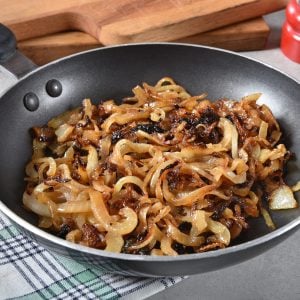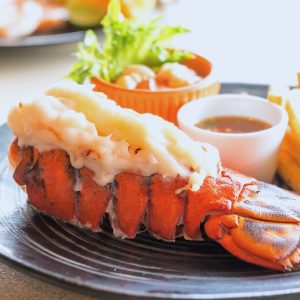Cooking With or Without a Recipe: Pros, Cons, and Tips
Cooking can be a joyful and creative experience, yet it often divides enthusiasts and professionals into two camps: those who swear by recipes and those who thrive on improvisation. Understanding the importance of cooking with a recipe or embracing the spontaneity of cooking without one is crucial for novice and seasoned chefs.
Recipes provide a structured approach, ensuring that the cook follows a precise method to achieve consistent results. They are vital when tackling complex dishes or cuisines requiring specific techniques and ingredient ratios. For beginners, recipes offer a guided learning path, fostering confidence and skill development.
Conversely, cooking without a recipe encourages culinary creativity and innovation. It allows the cook to experiment with flavors, textures, and presentations, often leading to unique and personalized dishes.
This approach is rooted in intuition and a deep understanding of ingredients and cooking processes. It fosters adaptability and problem-solving skills, enabling the cook to make the most of available ingredients and adjust dishes.
Ultimately, the choice between cooking with or without a recipe depends on the cook’s experience, goals, and the specific context of the meal. Both methods have their merits, and a balanced approach can lead to reliable results and exciting culinary discoveries.
The Advantages of Cooking with a Recipe
Cooking with a recipe offers numerous advantages that enhance the cooking experience and the final dish. Here are some key benefits:
- Consistency: Recipes provide a step-by-step guide, ensuring that the dish turns out the same way every time. This is particularly important for dishes that require precise measurements and cooking techniques.
- Learning Tool: For beginners, recipes are invaluable for learning the basics of cooking. They teach essential skills, such as how to chop vegetables, measure ingredients, and use various cooking methods.
- Efficiency: A recipe can help you plan your cooking process more efficiently. Recipes list all the necessary ingredients and equipment, helping you gather everything you need before you start cooking, which saves time and reduces stress.
- Reduced Waste: Recipes typically specify exact quantities of ingredients, which helps minimize waste. By following a recipe, you can avoid overbuying or using too much of any one ingredient.
- Culinary Exploration: Recipes allow you to explore new cuisines and dishes you might not otherwise attempt. They open up a world of flavors and techniques, broadening your culinary horizons.
- Reliability: A recipe ensures that the dish meets expectations when cooking for special occasions or guests. This reliability can be particularly comforting when you want to impress or when the stakes are high.
- Nutritional Information: Many recipes provide nutritional information, which can be helpful for those who are mindful of their dietary intake. This allows for better planning of balanced and health-conscious meals.
- Creativity Foundation: Once you’re comfortable following recipes, they can serve as a foundation for your own creativity. You can start modifying recipes to suit your taste or dietary needs, gradually building your confidence in cooking without strict guidelines.
The Disadvantages
Cooking without a recipe, often referred to as improvisational cooking or freestyle cooking, offers several advantages that can enhance your culinary skills and overall experience in the kitchen. Here are some key benefits:
- Creativity and Innovation: Cooking without a recipe allows you to experiment with different ingredients, flavors, and techniques. This freedom fosters creativity and can lead to the discovery of unique and personalized dishes.
- Adaptability: Without the constraints of a recipe, you can quickly adapt to what you have on hand. This flexibility is beneficial for using up leftovers or making the most of seasonal and locally available ingredients.
- Skill Development: Freestyle cooking encourages a deeper understanding of cooking principles, such as flavor balancing, texture contrasts, and ingredient interactions. This hands-on experience can significantly improve your overall cooking skills.
- Intuition and Confidence: Cooking without a recipe helps develop your intuition in the kitchen. As you become more comfortable with improvisation, your confidence grows, making you a more versatile and resourceful cook.
- Efficiency and Speed: When a recipe does not bind you, you can cook more quickly and efficiently. You can streamline the process, make adjustments on the fly, and eliminate unnecessary steps.
- Personalization: Cooking without a recipe allows you to tailor dishes to your specific tastes and dietary needs. You can adjust flavors, textures, and ingredient combinations to create meals that perfectly suit your preferences.
- Sense of Accomplishment: Creating a delicious dish from scratch, without relying on a recipe, can provide a strong sense of accomplishment and pride. This achievement can be particularly satisfying and motivating.
- Stress Reduction: For some, the flexibility of cooking without a recipe can be less stressful than following detailed instructions. It allows for a more relaxed and enjoyable cooking experience, free from the pressure of precise measurements and steps.
- Resourcefulness: Cooking without a recipe encourages you to be resourceful and make the most of what you have. This can be particularly useful in reducing food waste and creatively using pantry staples and fresh produce.
Cooking without a recipe can transform the kitchen into a space of exploration and enjoyment where you can fully express your culinary creativity and intuition.
How Do You Cook Without a Recipe?
Cooking without a recipe can initially seem daunting, but with practice and a few guiding principles, it becomes an enjoyable and liberating way to create delicious meals. Here’s how you can get started:
1. Understand Basic Cooking Techniques
- Sautéing: Cooking food quickly in a small amount of oil over medium-high heat.
- Roasting: Cooking food in the oven at high temperatures.
- Boiling: Cooking food in water or broth at a rolling boil.
- Grilling: Cooking food on a grill over direct heat.
- Baking: Cooking food in the oven with consistent heat.
2. Know Your Ingredients
- Familiarize yourself with various ingredients’ flavors, textures, and cooking times.
- Understand which ingredients pair well together. For example, garlic, olive oil, and tomatoes are a classic combination in many cuisines.
3. Use a Flavor Base
- Start with a base of aromatics like onions, garlic, or shallots sautéed in oil or butter. This adds depth to your dish.
4. Balance Flavors
- Aim to balance the five basic tastes: sweet, salty, sour, bitter, and umami. Taste as you go and adjust seasoning accordingly.
- Use herbs and spices to enhance flavors. Fresh herbs like basil, cilantro, and parsley can brighten a dish, while spices like cumin, paprika, and curry powder add warmth and complexity.
5. Be Mindful of Textures
- Combine different textures to make a dish more interesting. For example, add a crunchy element like nuts or seeds to a creamy soup or salad.
6. Use Proper Cooking Times
- Pay attention to cooking times for different ingredients. Start with those that take the longest to cook and add quicker cooking ingredients later.
7. Taste and Adjust
- Continuously taste your dish and adjust the seasoning. Add salt, pepper, or acid (like lemon juice or vinegar) to enhance flavors.
8. Be Creative with Ingredients
- Don’t be afraid to substitute ingredients based on what you have available. For example, you can use tofu or mushrooms for a similar texture if you don’t have chicken.
9. Practice and Experiment
- The more you cook without a recipe, the more confident you will become. Experiment with different ingredients and techniques to discover what works best for you.
Example: Making a Simple Stir-Fry
- Heat some oil in a pan over medium-high heat.
- Add aromatics like minced garlic and ginger and sauté until fragrant.
- Add protein (chicken, tofu, shrimp) and cook until browned.
- Add vegetables (broccoli, bell peppers, carrots) and stir-fry until tender-crisp.
- Season with soy sauce, a rice vinegar splash, and a sugar pinch.
- Taste and adjust seasoning, adding salt or pepper as needed.
- Finish with a drizzle of sesame oil and garnish with sliced green onions or sesame seeds.
Cooking without a recipe is about trusting your instincts, embracing creativity, and enjoying the process of making food that suits your taste and preferences.
















3 Responses
Actually, I think what he says is common sense and is something that was widely known by our grandparents. Their recipe books are almost cryptic as compared to ours today. Perhaps that is why I tend to gravitate towards cookbooks which have no pictures. A good example for me of this last point is Annie Bell’s Evergreen. I would like to know though, what is his recipe for maintaining his energy levels!
Recipes are how the elements of a dish are transferred from one cook to the next. As such they are very valuable from both a current and an historical value. I think the real issue is how rigidly individuals feel that they must follow a recipe as a set of rules that cannot be broken. If you develop your cooking skills sufficiently, it will only require the hint of a recipe to create worthwhile dishes (although the dish will be yours and not a duplication of someone else’s unless you follow their prescription rigorously). Many people fall into a trap where they feel they can only cook if they have a recipe to follow, this is unfortunate. But conversely, when I’m trying to recreate a dish from the past, following a recipe is very important.
Following a recipe for beginners who wish to practice cooking it’s very important, but after learning the basic cooking methods you can opt to follow or not to. I believe, a chef should always be creative by coming up with new and unique recipes.